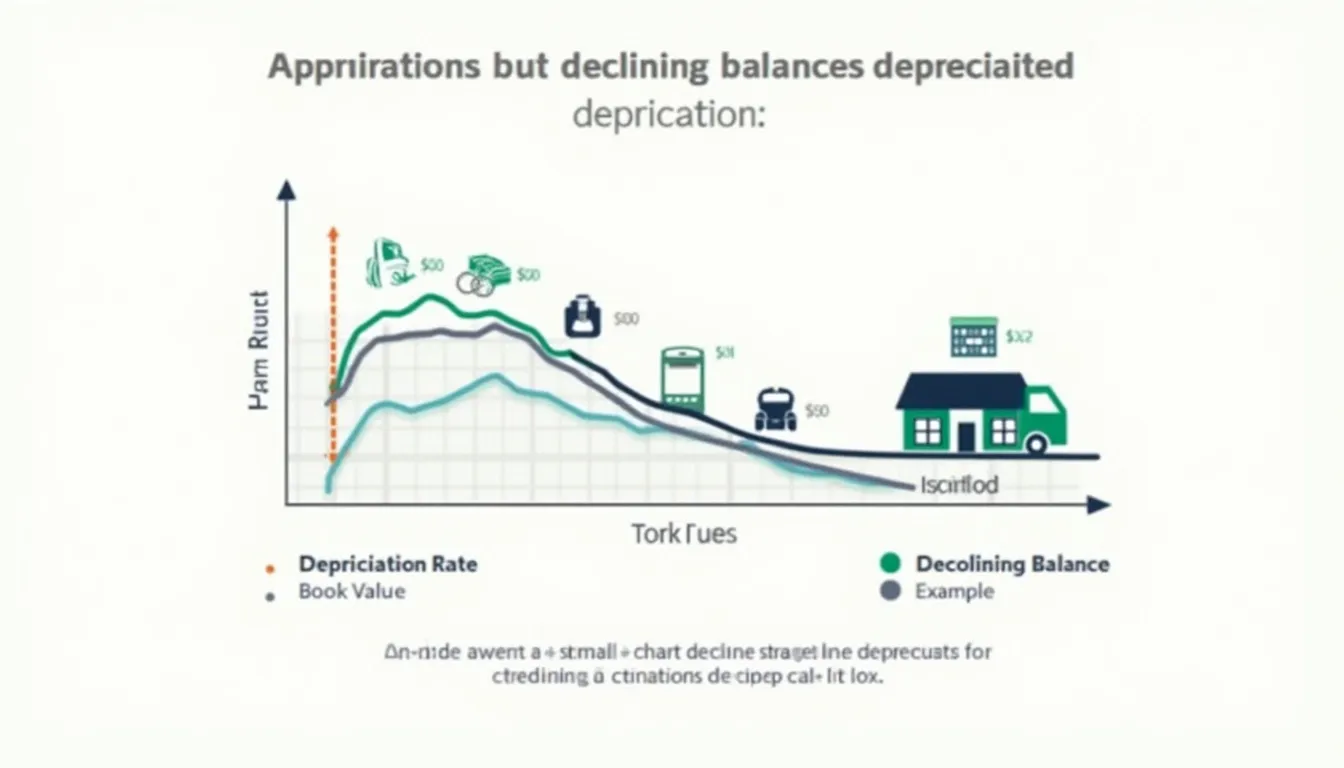Declining Balance Calculator
Is this tool helpful?
How to use the tool
- Depreciation rate: Enter the annual rate as a decimal between 0 and 1.
Example inputs: 0.20 (20 %), 0.40 (40 %). - Book value at beginning of year: Type the asset’s current carrying amount in dollars.
Example inputs: $50,000, $120,000. - Calculate: Press “Calculate” to see the yearly depreciation expense instantly.
- Record the result: Post the expense to your ledger and subtract it from the book value for next year’s run.
Formula used
Accelerated depreciation applies the fixed rate to the opening book value each year:
$$ \text{Depreciation Expense}= \text{Rate}\times \text{Book Value}_{\text{start}} $$
Worked examples
- Rate 0.20, Book $50,000 → $$0.20 rac{}{}50{,}000=10{,}000$$. New book value: $40,000.
- Rate 0.40, Book $120,000 → $$0.40 rac{}{}120{,}000=48{,}000$$. New book value: $72,000.
Quick-Facts
- Permissible rate range: 0 %-100 %/yr (FASB ASC 360).
- IRS allows 200 % declining balance for most tangible property (IRC §168(b)(1)).
- Switch to straight-line when it yields higher deductions (IRS Pub. 946, 2022).
- Average useful life for office equipment: 5 years (BLS Table C.1, 2023).
- 32 % of U.S. firms use accelerated depreciation (IRS SOI Table 3, 2023).
FAQ
What is the declining balance method?
The declining balance method calculates depreciation by multiplying a constant rate by the asset’s book value at each year’s start, front-loading expense (IRC §168).
When should you choose declining balance over straight-line?
Use it when the asset loses value rapidly—vehicles, computers, heavy machinery—because higher early deductions better match economic wear (IRS Pub. 946, 2022).
How do you select an appropriate rate?
Divide 1 by the useful life to find the straight-line rate, then multiply by 150 % or 200 % for accelerated schedules (Kieso et al., 2020).
Can the rate change during an asset’s life?
The chosen percentage stays fixed; however, you may switch to straight-line later to maximize the remaining deduction (IRS Pub. 946, 2022).
How does declining balance affect taxable income?
Higher early-year depreciation lowers taxable income sooner, deferring taxes; total lifetime deduction remains unchanged (IRS SOI Bulletin, 2023).
How do you switch to straight-line depreciation?
In the year straight-line equals or exceeds declining balance, compute the remaining basis over the remaining life and apply that rate (IRC §168(b)(3)).
What records must you keep?
Maintain purchase invoices, depreciation schedules, and annual journal entries for at least the asset’s life plus three years (IRS Pub. 583, 2023).
Is declining balance accepted under IFRS?
Yes; IAS 16 permits any systematic method that reflects asset consumption, including diminishing balance rates (IASB Handbook, 2021).
Important Disclaimer
The calculations, results, and content provided by our tools are not guaranteed to be accurate, complete, or reliable. Users are responsible for verifying and interpreting the results. Our content and tools may contain errors, biases, or inconsistencies. Do not enter personal data, sensitive information, or personally identifiable information in our web forms or tools. Such data entry violates our terms of service and may result in unauthorized disclosure to third parties. We reserve the right to save inputs and outputs from our tools for the purposes of error debugging, bias identification, and performance improvement. External companies providing AI models used in our tools may also save and process data in accordance with their own policies. By using our tools, you consent to this data collection and processing. We reserve the right to limit the usage of our tools based on current usability factors.







